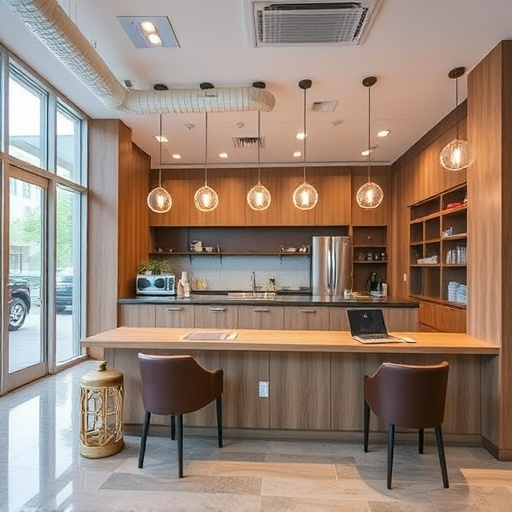Remodeling contractors face challenges from fluctuating material costs driven by global events and supply chain disruptions. To adapt, they must stay informed, maintain transparent client communication, and adopt proactive strategies like diversifying suppliers, fostering relationships, offering flexible terms, incorporating sustainable materials for cost savings and environmental benefits, and staying abreast of market trends to forecast future demands.
In the ever-evolving landscape of construction, remodeling contractors face a constant challenge: managing material cost fluctuations. This article offers valuable insights from industry experts on how these changes impact their trade. We explore the factors driving volatility in construction materials and present practical strategies for navigating unpredictable costs. For remodeling contractors, understanding these dynamics is key to staying competitive and profitable in today’s market.
- Material Cost Fluctuations: A Remodeling Contractor's Perspective
- Factors Driving Changes in Construction Materials
- Strategies for Navigating Unpredictable Material Costs
Material Cost Fluctuations: A Remodeling Contractor's Perspective

Material cost fluctuations are a constant challenge for remodeling contractors. In today’s dynamic market, prices can change rapidly due to various factors, from supply chain disruptions and global events to shifts in raw material availability. For instance, the recent global pandemic led to significant increases in construction materials like lumber, impacting projects ranging from small kitchen remodels to whole house makesovers.
These changes necessitate constant adaptability for contractors. They must stay informed about market trends, anticipate price swings, and communicate transparently with clients. Some proactive strategies include diversifying suppliers, maintaining strong relationships, and offering flexible contract terms. By embracing these practices, remodeling contractors can navigate material cost changes effectively, ensuring both profitability and client satisfaction in any home remodeling project.
Factors Driving Changes in Construction Materials

The dynamic nature of the construction industry is heavily influenced by various factors that constantly drive changes in materials costs. One of the primary contributors is the global supply chain, which can experience disruptions due to geopolitical tensions, natural disasters, or pandemics. These events disrupt raw material production and distribution networks, leading to price fluctuations. For instance, the COVID-19 pandemic caused delays in manufacturing and shipping, resulting in increased costs for lumber and other building materials, impacting many remodeling contractors’ budgets.
Another significant factor is market demand and trends in home improvement services. As more homeowners seek to enhance their living spaces, there’s a corresponding rise in the demand for specific materials. Customized work often requires unique or specialized materials, which can be costlier but are essential for creating functional spaces that meet individual needs. Remodeling contractors must stay attuned to these trends and incorporate sustainable building practices, as they not only influence material costs but also contribute to a greener environment and more appealing home designs.
Strategies for Navigating Unpredictable Material Costs

In today’s dynamic construction market, remodeling contractors face the constant challenge of unpredictable material costs, which can significantly impact project budgets and timelines. To navigate this volatility, proactive strategies are essential. One effective approach is to foster strong relationships with suppliers and distributors, enabling better access to competitive pricing and timely delivery. Additionally, staying informed about industry trends and forecasting future material demands can help contractors anticipate price fluctuations and secure resources at optimal costs.
Another valuable strategy involves incorporating sustainable and locally sourced materials whenever possible. These options often offer cost-effectiveness alongside environmental benefits, allowing contractors to stay within budget while contributing to a greener construction landscape. For instance, focusing on high-quality yet affordable materials like reclaimed wood or energy-efficient appliances in kitchen and bath renovations can lead to substantial savings without compromising on the project’s aesthetics and functionality, thereby enhancing the overall value of renovation services.
Remodeling contractors play a pivotal role in managing material costs, especially in an era of fluctuating prices. By understanding the driving factors behind these changes and implementing strategic approaches, they can ensure sustainable operations. From staying informed about market trends to fostering relationships with suppliers, these insights empower contractors to navigate unpredictable material expenses effectively, ultimately contributing to successful remodeling projects.














